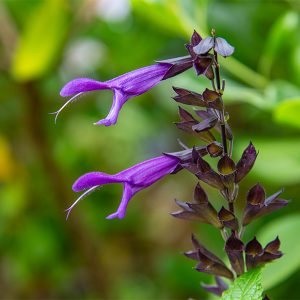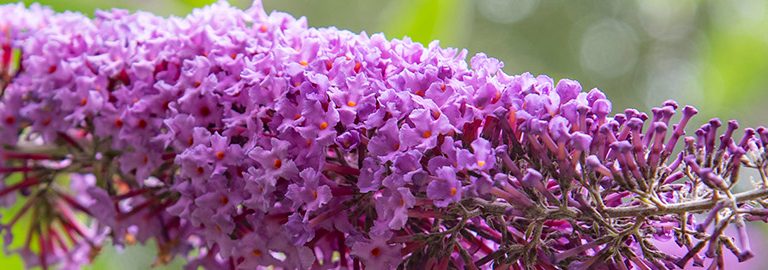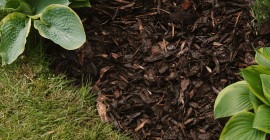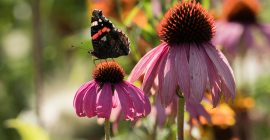If you want to create a beautiful garden that bursts into bloom in the summer, the first step is choosing the right plants. We’ve pulled together the top ten summer flowering plants to help you design your dream garden. After adding these incredible summer flowering plants to your garden, make sure you care for them and encourage them to produce more flowers by feeding regularly with Boost Plant Food!
Top 10 Summer Flowering Plants
Agapanthus ‘Fireworks’ is one of the most spectacular African lilies, producing large, rounded heads of blue-flushed, white, trumpet-shaped flowers. They are held on stout stems to around 60cm tall, above strappy evergreen foliage. It’s a really impressive sight in full bloom! Give it a sunny place in fertile, well-drained soil, somewhere with winter shelter. It is a great plant for a large pot and can then be moved into the greenhouse (or under some sort of protection) over winter. Hardy to about -5°C. Stands some drought and summer heat well.
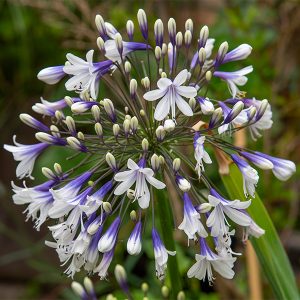
Armeria maritima (thrift) will be a familiar sight to those who holiday on the coast. It is a UK native found growing on sea cliffs, but also a superb garden plant. It forms low, dense cushions of fine, slender foliage which are topped by delightful little rounded heads of pink flowers. The flowers are produced from late spring through early summer and then at times later in the year, on stems around 10-15cm tall. It stands full sun, spells of drought and poor soils, and likes an open site with sharp drainage such as a wall-top or a sunny rock garden. Loved by pollinating insects. Hardy to around -15°C or lower.
Buddleja ‘Pink Delight’ is a fine selection of butterfly bush, producing huge cone-shaped panicles of scented, clear pink flowers from midsummer that freely attract pollinators, especially butterflies. It is an easy plant to grow, capable of reaching around 3m tall and across, and needing just a sunny place that does not become waterlogged. It tolerates poor soils and short spells of dry weather well. Deadhead plants as flowers fade to ensure a longer display and prune plants hard in winter once they have lost their foliage to keep them relatively compact. Hardy to around -15°C.
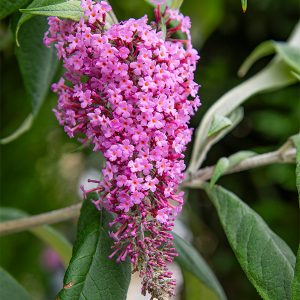
Dianthus barbatus Festival Series are dazzling plants in flower, a perfect late summer flowering plant for containers and bedding. It’s often sold in garden centres late in the season, to flower just as many other seasonal plants are running out of puff. The flashy flowers in combinations of red, pink and white have petals with crimped edges, held on stems to around 8-10cm tall which, in full bloom, mask the slender grey-green foliage. Displays last for weeks if deadheaded. You can keep the plants through winter for a repeat show the following spring. They like sun or part-shade and good drainage; hardy to around -10°C.
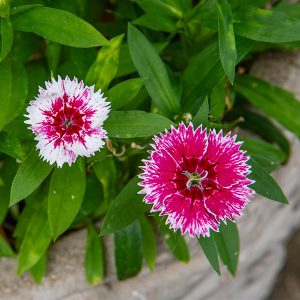
Erigeron karvinskianus (Mexican fleabane) is often nicknamed ‘dancing daisies’ – a perfect way to describe this much-loved, low-growing perennial. Its multitude of pink-flushed white daisies no more than 1cm across are held on the slenderest of stems that seem to dance in the breeze. Plants are low-growing to around 20cm high and 30cm across. It forms a sprawling mound of foliage that all summer and autumn is topped by an endless succession of delightful flowers. It thrives in sun or part-shade and likes good drainage, with plants self-seeding freely into paving cracks to delightful effect. Trim back in winter. Hardy to around -15°C.
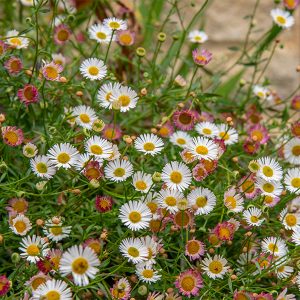
Erodium manescavii is an unusual relative of the many hardy herbaceous geraniums found in gardens, and like many of these it is a long-flowering and easy-to-grow plant. It forms a clump of soft, hairy, feathery foliage and all summer produces slender stems to around 20cm tall, topped by vibrant pink, starry flowers – the plant is seldom out of flower for months. Long, slender seed pods form and these will often result in more plants. It likes a sunny, well-drained spot and is ideal for gravel gardens or larger rock gardens, standing spells of drought brilliantly. Trim back in winter. Hardy to around -15°C.
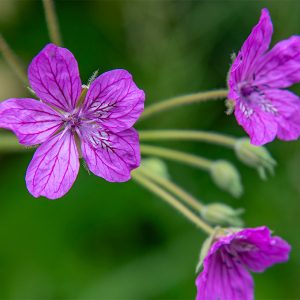
Geum ‘Totally Tangerine’ has taken the gardening world by storm in recent years. It is rightfully popular due to its displays of glowing orange, buttercup-like flowers. These are held in profusion on tall slender stems to around 1m or so high all through summer if conditions are right. This herbaceous perennial develops from a low clump of green, rather hairy leaves. It throws up flowering stems from May until the end of autumn when grown in fertile soil. It needs somewhere not too dry, in sun or with a little shade from the hottest part of the day. It’s great in mixed borders, gravel gardens or even in containers. Hardy to around -20°C.
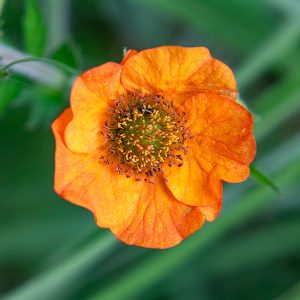
Hebe ‘Midsummer Beauty’ is a wonderful rounded evergreen shrub that will flower from midsummer until the first frosts of autumn. It can reach around 2m or more tall and across but may be shaped to keep it more compact. The flowers are small but held in long, showy, slender panicles to around 15cm. Individual blooms open in mauve-purple but fading to white, which gives the panicles a bicoloured effect. The racemes are produced generously, covering the plant for weeks at the height of flowering, but the display lasts for months and evergreen foliage is rich green and glossy. One of the hardier hebes, it likes sun best but stands part-shade well, somewhere not too dry. Trim in spring; hardy to around -10°C.
Lavatera, Malva x clementii ‘Barnsley’, is an old favourite but deservedly so! Few other hardy shrubs produce the multitude of blooms through summer and into autumn that this obliging evergreen provides. The five-petalled funnel flowers reach around 7cm across and are palest pink with a reddish eye. The plant is quick-growing with silvery evergreen leaves. It can reach 2-3m tall and as much across, but should be shaped to keep it more compact. It thrives in full sun and stands spells of drought easily when established. Plants are not long-lived but cuttings are easy to take. Trim in spring; hardy to around -15°C.
Salvia ‘Amistad’ has quickly become one of the most popular perennial summer flowering plants. Bearing numerous handsome, upright panicles of long, tubular, dark purple-blue flowers that open from near-black calyxes. It attracts masses of bumblebees. The plant reaches its peak from early August. It can be quite large growing, the leafy and rather aromatic upright stems easily reaching more than 1m high if established in fertile, fairly moist soil, in a sunny place. Alternatively, grow in a pot and overwinter under glass. It will survive in the garden through a mild winter if well mulched. Hardy to around -5C.
